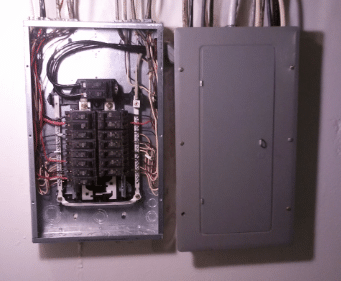Today, electricity is one of the most important parts of our daily lives. And keeping our power sources up-to-date is crucial for our homes to run smoothly and remain safe. That’s why upgrading your electrical panel could be extremely important, depending on your home, lifestyle and appliances. Here’s what you need to know.
What
An electric panel is one of the most utilized pieces of our homes. It flows energy from our lights to our refrigerators to our tvs to our internet and even our phones. We need it to continue our daily lives, especially for those of us still working from home. But like all pieces of technology, it can become outdaged or overused and need an upgrade.
Why and When
Most electric panels need to be replaced every 25-40 years. As technology and appliances progress, so does the need to upgrade panels, since the old ones do not have the capacity to deal with modern technology. But there are other reasons you might need to replace your panel, like flickering lights, a smell of burning, scorch marks on power outlets, warmth or sparks around outlets or electrical panel, electric shocks when touching switches or appliances. If you experience any of these signs, contact your local electrician immediately.
How
Before we explain the process of upgrading an electrical panel, it’s important to note the dangers involved. While hiring a professional can be expensive, doing it yourself can cause damage to your home, your wiring and yourself. Plus, a failed attempt can end up costing more in the long run. It’s much safer to bring in a professional electrician with proper equipment than doing it yourself. Also, in several states, it’s illlegal to upgrade your home’s panel yourself. Before starting any work, be sure to research where your state falls in legality for this type of DIY improvement.
If you have the proper training and it is legal in your state to do the upgrade yourself, follow these basic guidelines.
- Turn off the main circuit breaker. (You may need to contact your electrical company to shut off all electrical cables to your home while you perform this work.) If you cannot do this step, DO NOT MOVE FORWARD. Hire a professional immediately to complete the work.
- Remove the outer panel door once you have ensured all electricity is off.
- Label all wires regarding what or where they provide power.
- Remove wires with extreme caution. Take the individual breaks or fuses out of the panel, remove the ground line and disconnect the neutral bar.
- Once all wires are disconnected, remove the main breaker using extreme caution.
- Add in the new panel. Pro Tip: place circuits that are close to one another close together on your new panel. This helps with labeling and confusion.
- Once everything is attached and secure to the new panel, turn on the main circuit breaker.
Do you have more electrical panel questions? Contact our residential electricians today.


“Once all wires are disconnected, remove the main breaker using extreme caution.” Why do I have to use extreme caution? If something goes wrong while I’m doing this could I get electrocuted or die?